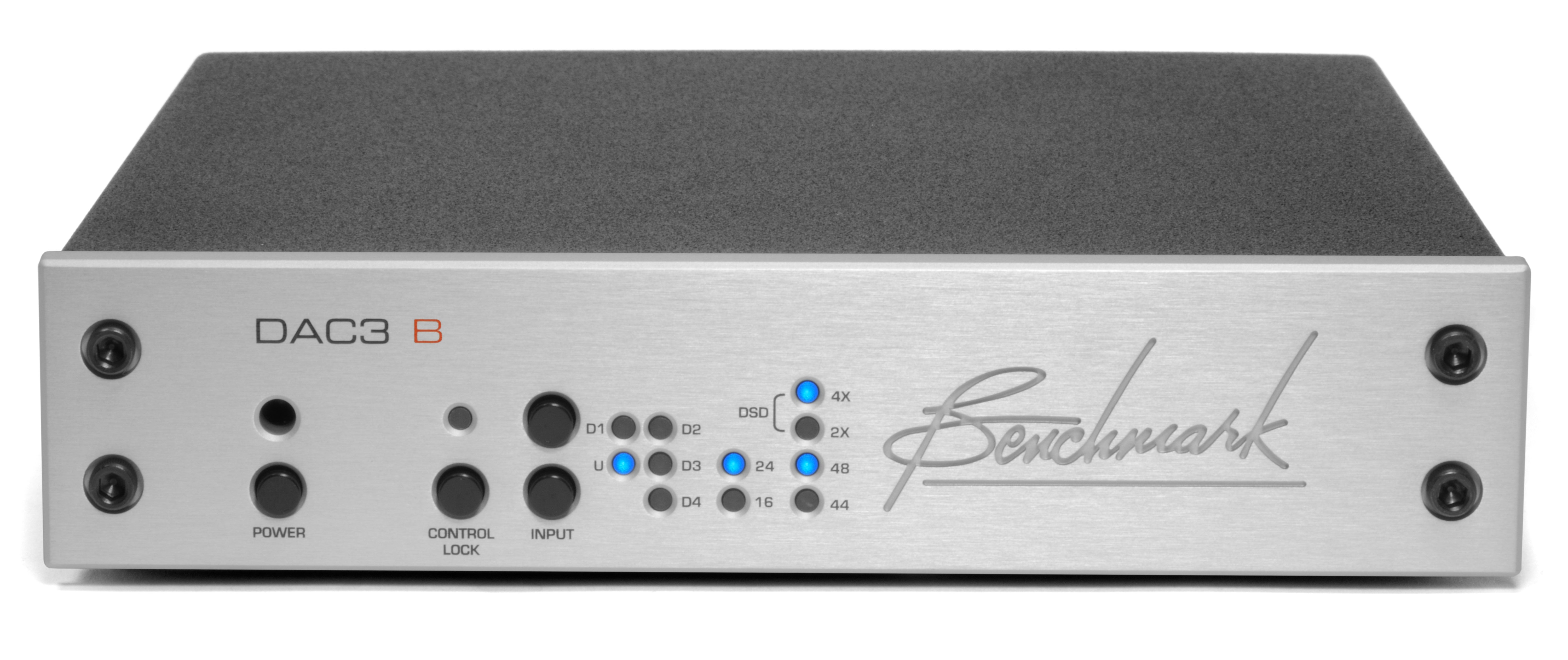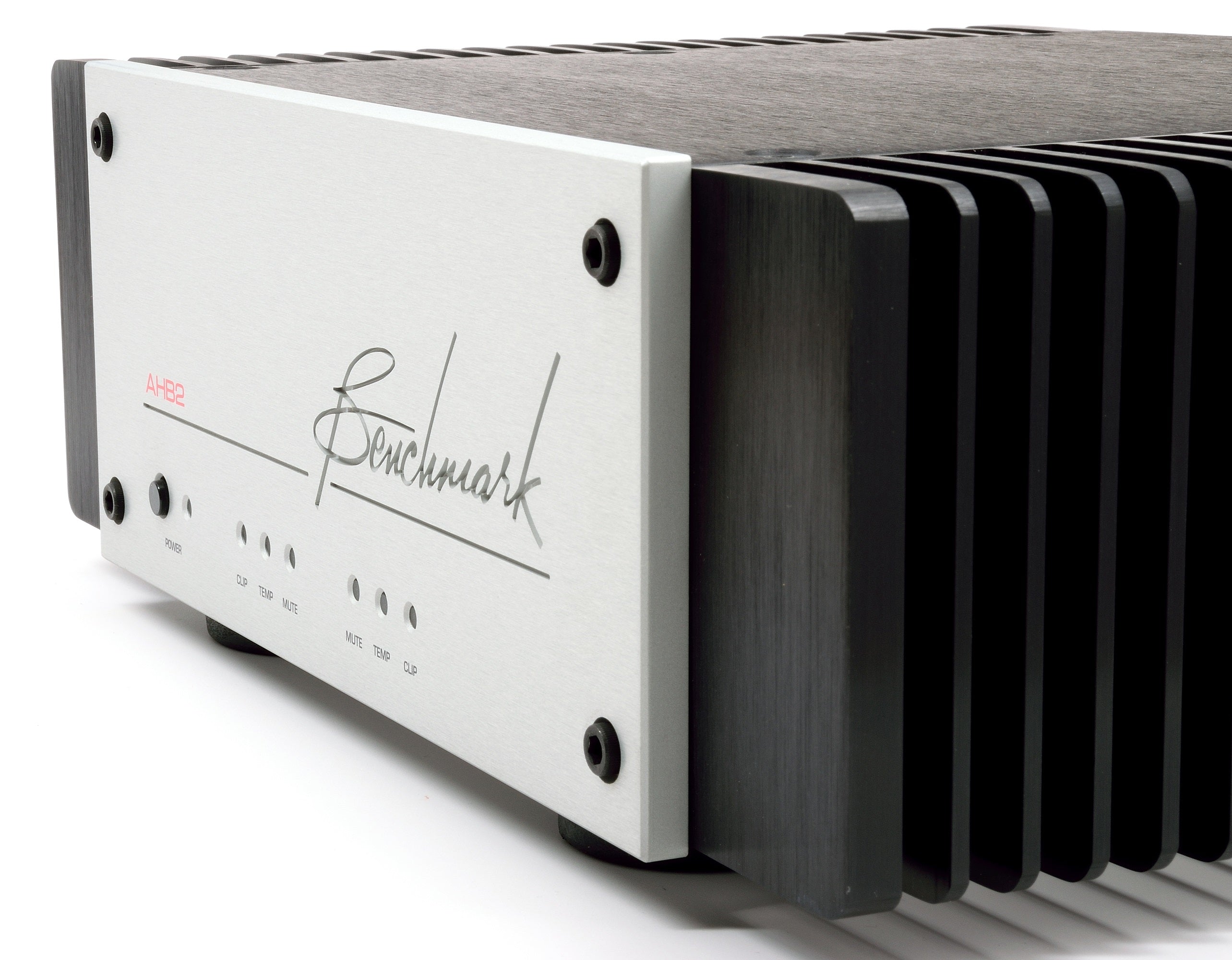Benchmark Media Systems®
As our name implies, we are committed to excellence.
Benchmark products are designed and built by audio enthusiasts. We are musicians, audiophiles and audio professionals who are passionate about audio quality. We also are passionate about the durability and build quality of our products. Most of our products are designed, assembled, tested, and shipped worldwide from our headquarters in Syracuse, NY, USA, where we have been located since 1985.
We are Benchmark Media Systems, Inc.
More about us
DAC3 - Award Nominee - Best Digital Audiophile Product of 2024 (Cost No Object)
2024 Nominees
- Benchmark Media DAC3 B DAC, $1895
- Bricasti M3 DAC, $6000
- Bricasti M19 CD-SACD Player, $10,000
- T+A DAC 200, $7620
- Weiss Engineering Helios DAC, $21,995
"There was some debate about whether anybody can hear the differences above a good Chi-Fi DAC like the Topping D90. Unless you are missing most of your high-frequency hearing, you can hear where a high-end DAC makes a difference."
The Bricasti M3 is a great example of that performance in a $6,000 DAC."
"The Benchmark DAC3 B is an audiophile DAC, with pro audio roots, that punches way above its weight."

LA4 Review - Mike Prager, FutureAudiophile.com
"Benchmark Media Systems made its reputation in both pro audio and audiophile circles by designing gear with extraordinarily low noise and distortion, and selling it at reasonable prices."
"What Makes the Benchmark LA4 Preamp So Special?"
"A high-quality volume control is much of what makes a superior preamp shine, and the Benchmark’s volume control is outstanding. The Benchmark LA4 uses a bank of precision resistors switched by gold-contact relays to set volume in 256 steps of 0.5 decibels each."
"If accurate reproduction is your wish, you won’t find a preamp with meaningfully better objective performance than the Benchmark LA4, especially one made in the United States at anything near the LA4’s price."
"Very few preamps at any price reach the LA4’s level of objective performance."
"On the subjective end of things, the Benchmark LA4 preamp puts the lie to the old audiophile myth that neutrality means clinical, cold, or sterile sound. Instead, here neutrality means musical, involving sound, with precise, stable imaging, a sense of space (if one is on the recording), and exceptionally truthful timbres."
- Mike Prager, FutureAudiophile.com

AHB2 Review - Mike Prager, Future Audiophile
"For years, the audio world acknowledged one main contender (at least at sub-five-figure pricing) for the quietest, cleanest, most neutral power amplifier around. That was the Benchmark AHB2, whose specifications are still, for all practical purposes, unsurpassed, even by today’s excellent Class-D amps."
"10 years after its release, the Benchmark Media Systems AHB2 stereo power amp is still a standard-bearer in clean, neutral sound in the audiophile world."
"I greatly enjoyed having a pair of AHB2s in my system – their purity, neutrality, and seemingly unlimited power provided a clear window on the music and a lot of joy."
"I especially appreciated the AHB2’s smooth, well-integrated treble, free of splashiness or grain, and its natural reproduction of the human voice."
- Mike Prager, Future Audiophile

What is the Purpose of an FFT in Audio Measurements?
The FFT … an Audio Microscope.
An FFT analyzer is like an audio microscope. It allows us to easily measure the frequency and amplitude of tones that are below the level of the noise. Traditional audio meters fail when the signal is lower than the noise level, but with an FFT, we can accurately measure tones that are 30 to 40 dB below the level of the noise.
In many ways, our ears behave like an FFT audio measurement system. Our ears can detect the frequency and amplitude of tones that are as much as 30 dB below the ambient noise. This means that our ears are 30 dB better than traditional audio meters! This is why we can carry on a conversation in a noisy room, and this is why we can hear individual instruments within an orchestra. This is also why small defects need to be detected and corrected when designing top-quality audio gear.
John Siau, Benchmark’s lead Engineer, will explain the “magic” of the FFT analyzer without the use of advanced mathematics. He will show an FFT analyzer in action, and he will measure a complete Benchmark chain to determine if it produces audible noise or distortion. Learn how to read an FFT plot and learn what to look for when selecting audio components.

Interpolator Overload Distortion
Most digital playback devices include digital interpolators. These interpolators increase the sample rate of the incoming audio to improve the performance of the playback system. Interpolators are essential in oversampled sigma-delta D/A converters, and in sample rate converters. In general, interpolators have vastly improved the performance of audio D/A converters by eliminating the need for analog brick wall filters. Nevertheless, digital interpolators have brick wall digital filters that can produce unique distortion signatures when they are overloaded.
10% Distortion
An interpolator that performs wonderfully when tested with standard test tones, may overload severely when playing the inter-sample musical peaks that are captured on a typical CD. In our tests, we observed THD+N levels exceeding 10% while interpolator overloads were occurring. The highest levels were produced by devices that included ASRC sample rate converters.

Audiophile Snake Oil
The Audiophile Wild West
Audiophiles live in the wild west. $495 will buy an "audiophile fuse" to replace the $1 generic fuse that came in your audio amplifier. $10,000 will buy a set of "audiophile speaker cables" to replace the $20 wires you purchased at the local hardware store. We are told that these $10,000 cables can be improved if we add a set of $300 "cable elevators" to dampen vibrations. You didn't even know that you needed elevators! And let's not forget to budget at least $200 for each of the "isolation platforms" we will need under our electronic components. Furthermore, it seems that any so-called "audiophile power cord" that costs less than $100, does not belong in a high-end system. And, if cost is no object, there are premium versions of each that can be purchased by the most discerning customers. A top-of-the line power cord could run $5000. One magazine claims that "the majority of listeners were able to hear the difference between a $5 power cable and a $5,000 power cord". Can you hear the difference? If not, are you really an audiophile?

















